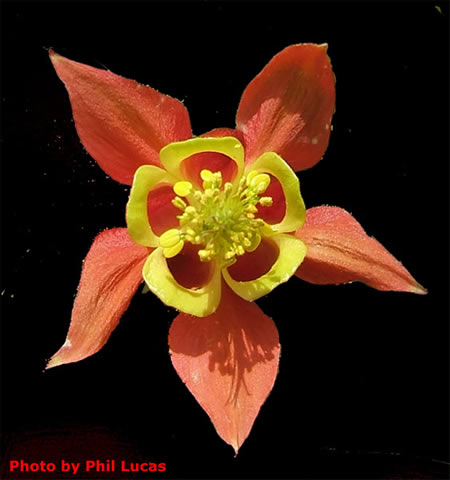The plant is in blossom throughout May and June. Its fruit is composed of five carpels, cylindrical in form, with pointed ends like a cluster of little pea-pods, each carpel (or seed vessel) containing many smooth, dark-coloured seeds, which are freely shed when ripe, so that the parent plant is generally the centre of a little colony of seedlings.
The generic name of Aquilegia is derived from the Latin aquila (an eagle), the spurs of the flowers being considered to resemble an eagle's talons. The popular name, Columbine, is from the Latin columba (a dove or pigeon), from the idea that the flowers resemble a flight of these birds. A still older name, Culverwort, has the same reference wort being the Saxon word for a plant and culfre meaning a pigeon.
Culpepper tells us:
'The leaves of Columbine are successfully used in lotions for sore mouths and throats. . . . The Spaniards used to eat a piece of the root thereof in a morning fasting many days together, to help them when troubled with stone. The seed taken in wine with a little saffron removes obstructions of the liver and is good for the yellow jaundice.'





